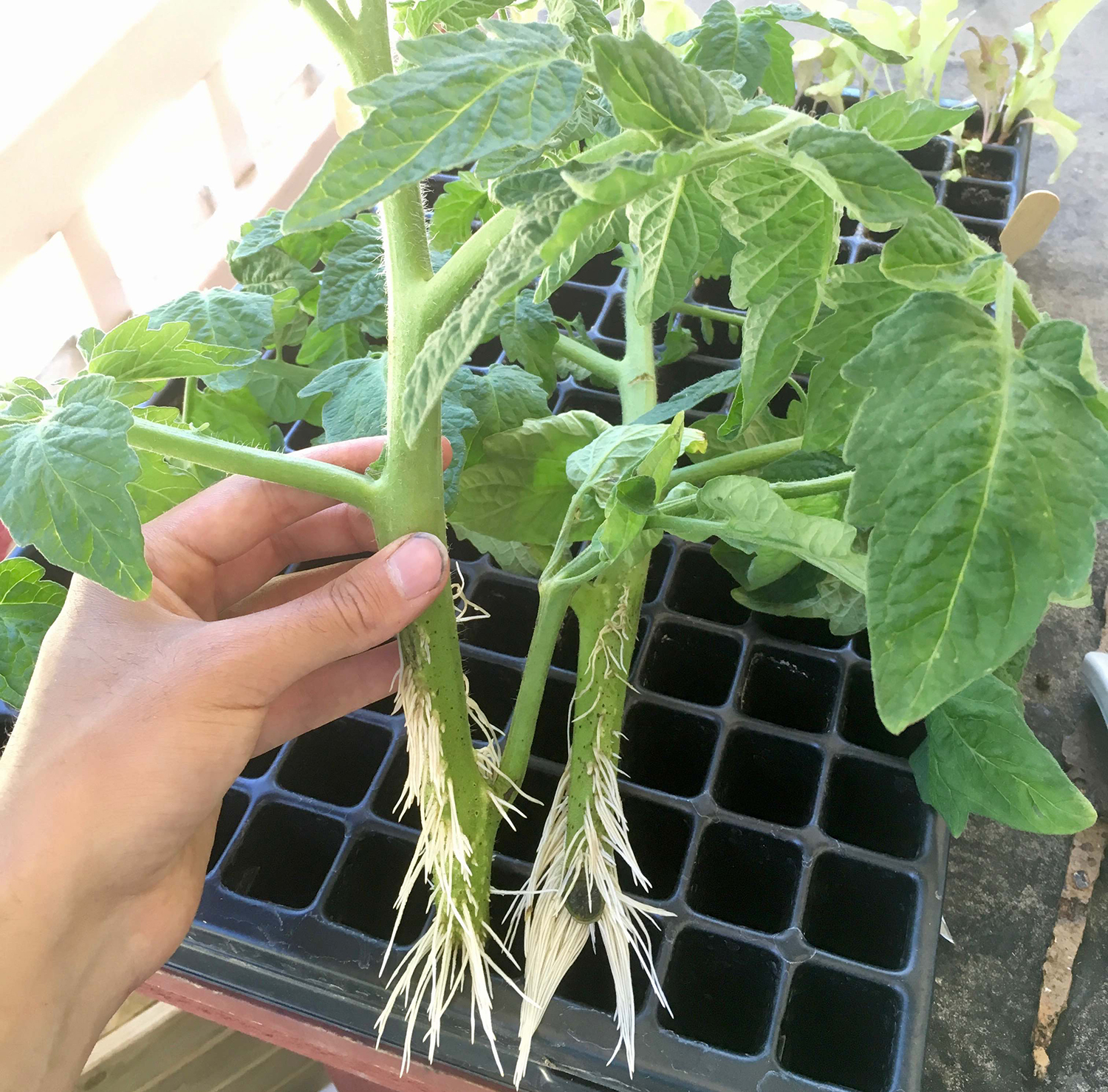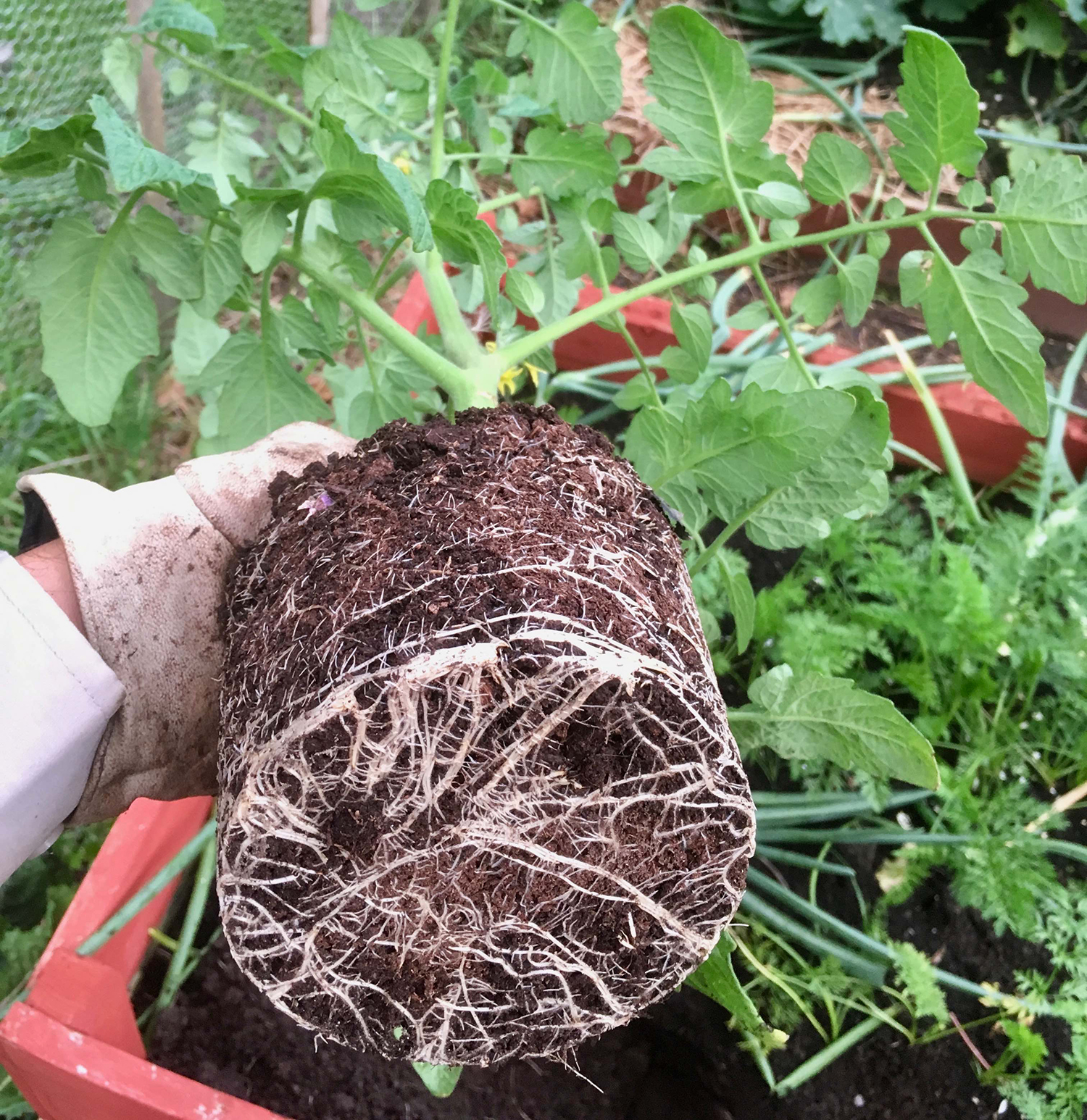Make tomato plants live forever!
Many of our vegetable plants are annual crops and often die of frost in Swedish climate. Tomatoes are one of these vegetables, often considered to be annual. Most people buy new tomatoe plants every year or sow them from seed early spring, but in fact, tomatoes can be made into perennial vegetables by taking cuttings. Learn how to get tomatoes to live for years in this tutorial!
From annual to perennial in one cut!
In their native habitat, tomatoes grow like perennials, although when grown in northern climates, they usually are grown as an annual crop. Tomatoes are known as a sensitive perennial plant, as they generally die when temperatures drop, especially when frost hits. Tomatoes dislike temperatures below 10 degrees Celsius and thus it is a summer vegetable in Sweden, but that does not mean they can not survive here in the winter.
By taking cuttings from your tomato plants and placing them in a sunny window or under growing lamps, you can keep the plants fresh all winter and thus overwinter with the same plant well into the spring. This is a very easy and satisfying way to make your plants give even more fruit, especially if you find a tomato variety that you like very much it makes sense to replicate it like this.
How to do it:
Option 1: Quick method
Cut some stems from healthy tomato plants and root them in seed mix or soil. Preferable you cut the tops of the tomatoes plants, but you can also use cuttings of suckers that will still need to be cut. Just make sure the branch you choose is healthy and free from diseases. Cut off suckers and blossoms since the plant should focus on rooting and not forming fruit or new greenery. Make a cut in the trunk with scissors or secateurs, preferably a little bit of an angle under a branch shoot, and put the stem in a pot of soil. From here roots will grow rapidly. You can even root several small cuttings in a pot or in a larger container and then transplant them into larger pots as they grow bigger.
See more in this video from Farbror Green (video in Swedish):
Option 2: Water method
Just use the same method of making cuttings, as above just that instead of putting them directly into soil, place the cuttings in water to let them root here first. This way you can also root bigger plants that might take longer to root in soil. You simply put the tomato cuttings in a glass or a vase of water where roots are formed and then you plant them into pots of soil. It's faster to put them in soil directly, but if you do not think you will be able to water daily, the water method is a good option that I used myself. Just refill when the plant is drinking or the water evaporates. After a while, a lot of roots have been formed on the stem and your tomato plants might look like these:

After they have formed roots, it is time to plant in pots with soil. I tried this method this summer and planted his rotten cuttings in pots with soil on July 20th, and after just a few weeks they had rotated properly. After a month, the root system was so large and the plant was longing for more soil.

I even used big cuttings from suckers (that would have just been composted otherwise, since they needed to be cut) and these plants managed to grow really well!
What happens then?
Well, we would like to overwinter the plants, right? And not plant them out in the cold and moist autumn garden. So how do we keep them fresh all season?
The secret is to just cut or chop the heads off the plants as they get too high. It can sound rough but is a great way to keep the plant fresh and get a number of extra seedlings at the same time. 🌱 Here's another very informative video from Farbror Grön about how the cutting the heads off of tomatoes actually works:
The question now is only where we are going to put all the plants. They prefer a sunny window or a place with additional growing light . However, tomatoes would like to have a quite a lot of sun that a little extra lighting never hurt even if you think your window is quite sunny. And in the spring you have lots of nice plants to put out!
You may be looking for a cultivation area for your tomatoes and other garden goodies in the spring? Take a look at Grow Discover. Here you can find places to grow around Gothenburg and some neighboring municipalities.
PS: We'd love to hear from you!
Do you have any experience of growing tomatoes in the winter or multiplying tomato plants by taking cuttings? And what are your best tomato cultivation tips? Let us know below in the comments!
Happy tomato growing!

Sincerely,
Jonathan Naraine
Architect and Foodsystem designer at The Foodprint Lab Architects
jonathan@thefoodprintlab.com